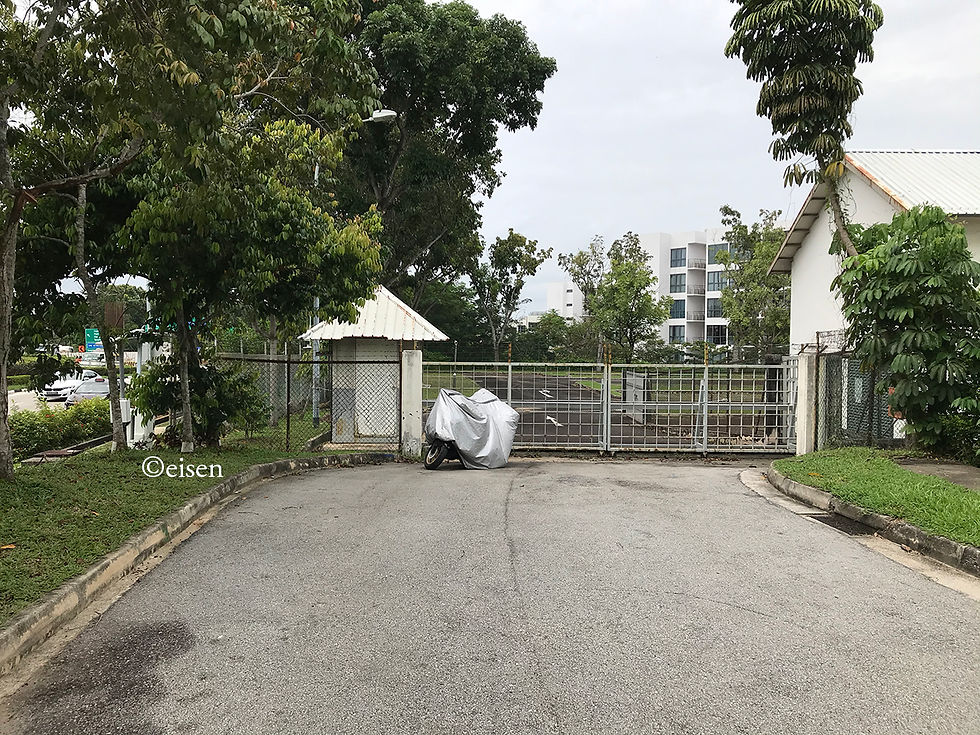- Jan 24, 2021
Yesterday, I explored the ring of three public roads and two closed roads that surround the vast, open field that I dub the Old Holland Plain. The plain lies to the south of Methodist Girls’ School and King Albert Park MRT Station.
The public roads are Old Holland Road to the north, Holland Link to the east, and Holland Plain to the south. The closed roads are Holland Road South and Holland Road West. Together, they surround a sprawling patch of quiet, open greenery a short walk from the busy Bukit Timah-Dunearn trunk road.

Old Holland Road was derived from Holland Road. I’ve written about the latter as a secondary trunk road in Jalan Singapura. Holland Road wasn’t named after the geographical region in the Netherlands; rather, it was named after a person, probably Sir Henry Holland (1825-1914), Secretary of State for the Colonies from 1887 to 1892.

Back when anything west of Orchard Road was considered “the country”, Holland Road served the suburban, northwestern part of the Municipality of Singapore. After a realignment sometime between the 1870s and 1880s, Holland Road connected Napier Road and Bukit Timah Road, running northwest for much of the way, then northeast, for a total of four and a half miles.
Holland Road in 1954, shaded blue:

The area I explored was the northern section of Holland Road in 1954, close to Bukit Timah Road. The Chinese cemetery at the 7th Milestone of Holland Road was Fong Yun Thai Cemetery, a Hakka graveyard.
The northern section of Holland Road in 1975:

Smaller tracks branching off the road, such as Yoon Kim Road, Lorong Makam, and Lorong Panchar, had been named.
The same area in 1995:

Methodist Girls’ School had moved to the area from Mount Sophia. Fong Yun Thai Cemetery had been exhumed; the remains of its deceased had been moved to a columbarium built by the association which had managed the cemetery.
The aforementioned tracks of Yoon Kim Road and Lorong Makam had been expunged; the latter for Holland Lane.
The area in 2007:

A new road system was forming - Holland Road North, Holland Road West, Holland Road South (absorbing Holland Lane), and Holland Link to create a ring road connecting Holland Road to Blackmore Drive. The stretch of Holland Road east of Brizay Park to Bukit Timah Road had been renamed Old Holland Road.
And the area today:

The area remains largely undeveloped. Part of Holland Road has been expunged. Holland Road West and half of Holland Road South remain closed; the other half of Holland Road South is now Holland Plain. Holland Road North has been renamed and added to Old Holland Road; this means the western part of Old Holland Road today is ironically, not so “old” - it is about 20 odd years old.
I started my journey in the south, where Holland Road South, Holland Road, and Holland Plain met.

People parked their cars here to play with their drones. I wonder whether they knew this wide expanse was once a Hakka cemetery. I tried imagining a sea of graves before me.

Holland Road South, closed to motor traffic. One could walk in though. Joggers used it too.

I walked on Holland Road South, heading west.


As Holland Road South gave way to Holland Road West, the road narrowed significantly, partly because years of neglect had allowed trees and bush to reclaim part of the road. Observing how nature encroached upon an abandoned road was fascinating.

Most of Holland Road West was split vertically 1:2 - one-third was left for pedestrians, joggers, and cyclists, while two-thirds was fenced off; a peek past the fence reveals a dusty track connected to work sites.

Holland Road West meets Old Holland Road and Blackmore Drive here.

This part of Old Holland Road used to be Holland Road North - not a very “old” road.

Old Holland Plain, formerly Fong Yun Thai Cemetery.

Holland Link.


The Fong Yun Thai Association Columbarium lies along Holland Link. More about the columbarium in a future post!


Holland Plain, formerly Holland Road South, and before that, Holland Lane, and further before that, Lorong Makam.


According to the Urban Redevelopment Authority’s 2019 Master Plan, Old Holland Plain is slated for housing. Laurel Wood Avenue will also be extended to connect Holland Link and Holland Plain to Sixth Avenue:

Like many open patches of greenery in Singapore, we’ll have to enjoy this while it lasts.


























